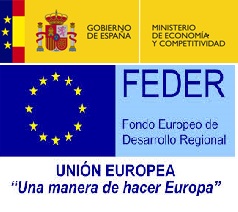Synchrotron image data analysis
Job Details
Cardiovascular diseases (CVD) remain the main cause of death in the EU, with over 4 million deaths per year which represents the 47% of total deaths in Europe. Fatal failure of pump function or cardiac fibrillation, as well as symptomatic reduction in function or arrhythmias, are induced by (congenital or acquired) alterations in the complex cardiac microstructure involved in activation, contraction and mechanical properties of the heart. These muscle tissue changes include the presence of important fibrosis or scar, abnormal tissue development due to genetic mutation and alterations or (partial) obstructions of coronary arteries. On the other hand, Congenital heart disease (CHD) is the leading cause of infant morbidity in developed countries and affect approximately 1% of new-borns. Therefore, the patient-specific microscopic organization of the cardiac muscle, as well as its integration in macro anatomy and its complex development, needs to be completely understood for diagnosis, prognosis and adequate personalised treatment. Current standard imaging techniques allow either high resolution with a small field of view, or a whole heart image without enough resolution to resolve individual myocytes. Thanks to the recent improvements of Synchrotron-based X-ray Phase-Contrast Imaging, 3D reconstruction of complete hearts at few micron resolution can provide essential and unique data for understanding cardiac microstructure and its influencing factors currently not available. However, the amount of generated data for each sample can easily exceed the terabyte size. The simple inspection and visualization of such big image is already challenging. Therefore, a tool for 3D visualization and (semi-automated) 3D annotation of very large multidimensional, multimodal and multiscale volumes is highly needed. The aim of this project is to develop an interface allowing the multi-scale visualisation
and quantification of the macro and micro-structure of healthy and diseased hearts. This interface, simplifying greatly the large dataset handling, will allow a simultaneous comparison of several datasets of hearts. The results arising from this project will provide insights into the cardiac microstructure (such as myofibres, vessels and trabeculation organization) and the patho-physiological processes involved in different CVD. This information is crucial for future clinical applications to understand heart function and remodelling in the case of different CVD but also to provide more personalised treatments.
ORGANISATION/COMPANY
Universitat Pompeu Fabra - ETIC
RESEARCH FIELD
Engineering › Biomedical engineering
RESEARCHER PROFILE
Recognised Researcher (R2)
APPLICATION DEADLINE
31/08/2016 00:00 - Europe/Brussels
LOCATION
Spain › Barcelona
TYPE OF CONTRACT
Temporary
JOB STATUS
Full-time
HOURS PER WEEK
37.5
OFFER STARTING DATE

01/10/2016
Financed by the Spanish Ministry of Economy and Competitiveness and FEDER
Official number reference: TIN2014-52923- R
